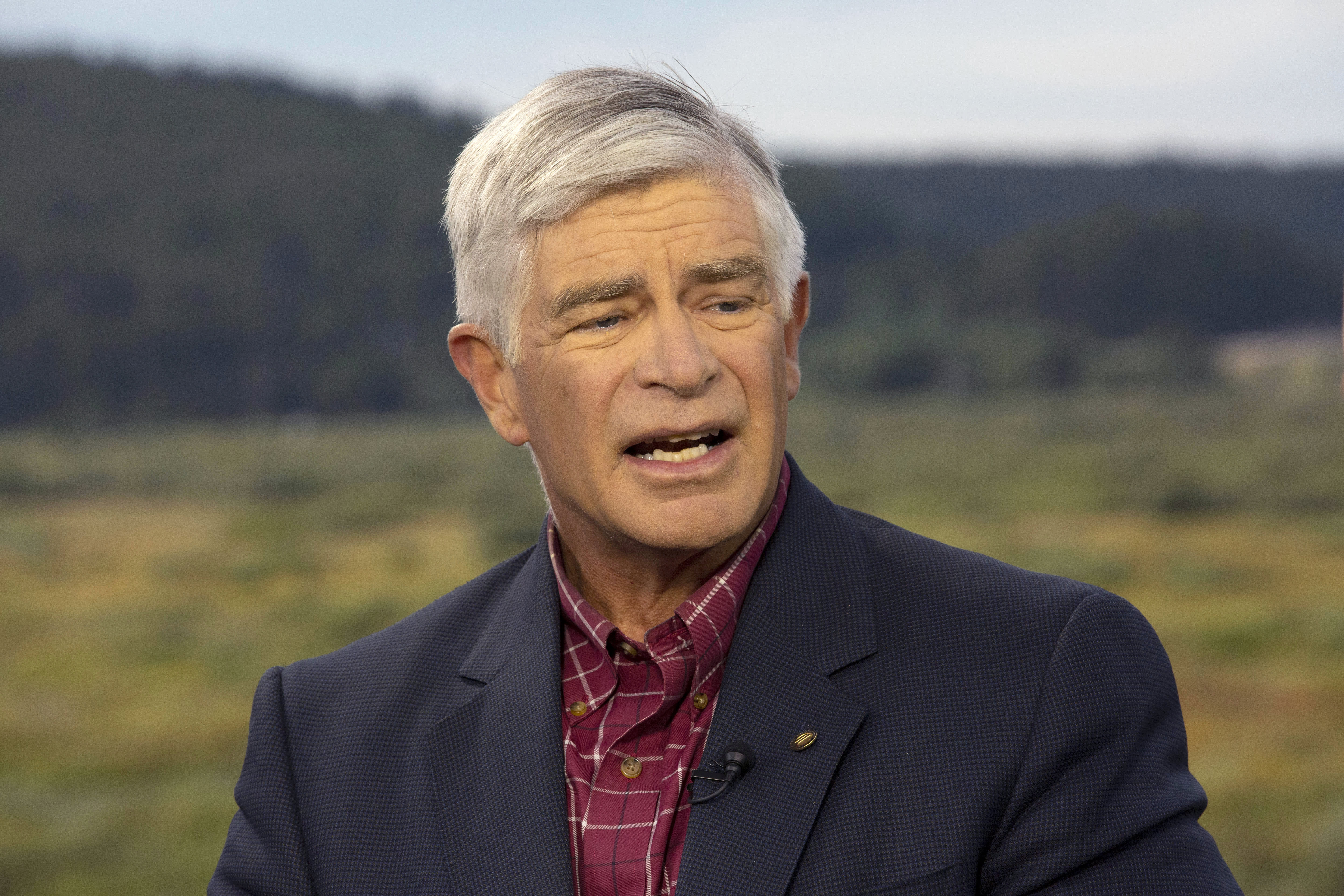Patrick Harker, President of Philadelphia Federal Reserve Bank, during the Fed’s annual Jackson Hole symposium in Wyoming.
Gerard Miller | CNBC
Philadelphia Federal Reserve President Patrick Harker warned Thursday that reopening the economy too quickly could have grave consequences.
The central bank official posed two scenarios:
- The “more optimistic” one where the economy reopens in June, there is ample technology to control the coronavirus spread and there is no feared second wave in the fall. In that case, he sees a much-expected severe contraction in the second quarter followed by a “significant rebound” in the second half that is nonetheless not enough to undo the damage in the earlier part of the year.
- In the second scenario, the economy opens too quickly, a second wave comes through and the downturn is worse.
“Not only would this be a health catastrophe, but it would reverse the recovery as well. In this less hopeful scenario, I project a similar growth path to the baseline for 2020, followed by a painful economic contraction of GDP in 2021 as shutdowns are reintroduced,” Harker said in prepared remarks for a presentation to the Chicago Council on Global Affairs.
He spoke as nearly half the nation’s economy was being restarted after being shut down since mid-March.
Harker noted that the current slowdown was exacerbated greatly by the social distancing policies needed to control the coronavirus spread. But he said consumers already had begun to retrench beforehand, indicating that a rebound could take more time.
He and his colleagues have implemented a variety of measures during the crisis, from taking short-term rates to zero to a series of lending and liquidity programs aimed at supporting markets and the economy.
Harker stressed that the uncapped bond buying in which the Fed is engaging should not be considered quantitative easing, at least in respect to the efforts the central bank undertook during the financial crisis to push investors into riskier assets like stocks and corporate bonds.
“We’re not in 2009 anymore and this is not quantitative easing 2.0,” he said. “The principle behind quantitative easing was that people weren’t engaging in investments because the cost of capital was too high. That is simply not the case now. The reason people aren’t engaging economically is the health crisis.”
Instead, he said the Fed is in “rescue” mode and that further direct payments that are needed for individuals will have to come from Congress.
